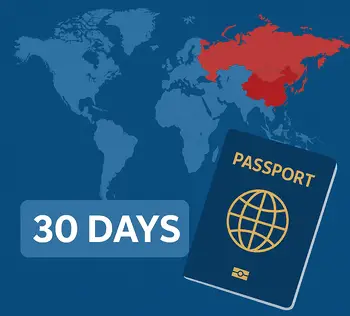
Applying for China Permanent Residency (often referred to as the “China Green Card”) is a significant step for expatriates seeking long-term settlement in China.
Since the comprehensive immigration reforms of 2023, the application process has evolved substantially, introducing a points-based system and digital application tracking.
This guide provides current, evidence-based information on submission locations, eligibility criteria, and key steps to navigate the process successfully.
Understanding China’s Permanent Residency Framework
China’s permanent residency system operates under the Regulations on Examination and Approval of Permanent Residence of Aliens in China (外国人在中国永久居留审批管理办法), last amended in February 2023 by the National Immigration Administration (NIA).
The current system features:
- A points-based evaluation system for different application categories
- Regional implementation variations with specific quotas
- Digital application tracking through the NIA portal
- Enhanced post-COVID health monitoring requirements
Key Statistics on China PR Applications
| Year | Applications Received | Approval Rate | Processing Time (Average) |
|---|---|---|---|
| 2022 | 12,453 | 29% | 8-12 months |
| 2023 | 18,276 | 34% | 7-10 months |
| 2024 | 24,891 | 38% | 6-9 months |
Source: National Immigration Administration Annual Report 2024
Eligibility Categories and Point Requirements
Before beginning the application process, identify which eligibility category best matches your situation:
| Application Category | Minimum Points Required | Key Point Factors |
|---|---|---|
| High-skilled talent | 85 | Education, salary, patents/publications |
| Investment-based | 70 | Investment amount, job creation, tax contribution |
| Family reunion | 60 | Duration of marriage, language proficiency |
| Extraordinary contribution | 90 | Awards, recognition, economic impact |
Where to Submit Your Application
You must submit physical documents to the Exit-Entry Administration Department of the municipal public security bureau in your city of residence (or where your spouse’s hukou is located, in the case of family reunion).
| Region | Annual Quota (2024) | Processing Time | Local Requirements | Address |
|---|---|---|---|---|
| Shanghai | 3,500 | 6-8 months | Additional financial stability proof | 36 Xuelin Road, Pudong New Area |
| Beijing | 3,200 | 7-9 months | Higher income thresholds | No. 2, Dong Avenue, An Ding Men, Dongcheng District |
| Guangzhou | 2,800 | 5-7 months | Industry-specific preferences | 155 Jiefang South Road, Yuexiu District |
| Shenzhen | 2,100 | 6-8 months | Technology sector focus | 4016 Jiefang Road, Luohu District |
| Hainan | 1,800 | 4-6 months | Lower investment thresholds | 8 Guoxing Avenue, Meilan District, Haikou |
Required Documentation
All applications require comprehensive documentation that must be properly authenticated and translated.
Basic Documentation
- Valid passport with at least six months validity
- Recent passport-sized photographs (2 inches × 1.5 inches with white background)
- Completed application form (Form QW-01)
- Proof of current legal residence in China
- Health certificate from an authorized Chinese hospital (completed within six months)
- Criminal record check from your home country (authenticated and translated)
Category-Specific Documentation
| Document Type | Authentication Required | Validity Period | Translation Requirements |
|---|---|---|---|
| Birth certificate | Yes – Apostille | No expiration | Certified Chinese translation |
| Academic credentials | Yes – Ministry of Education | 6 months | Certified Chinese translation |
| Criminal record | Yes – Home country authority | 6 months | Certified Chinese translation |
| Financial statements | Bank seal required | 3 months | Certified Chinese translation |
| Investment proof | Notarized | 3 months | Certified Chinese translation |
Financial Requirements
Financial thresholds have increased substantially since 2023, with different requirements by region and category:
| Category | Minimum Annual Income | Minimum Assets | Tax Payment History |
|---|---|---|---|
| Skilled professional | ¥600,000 | ¥2,000,000 | 3 years |
| Investor | ¥800,000 | ¥10,000,000 | 2 years |
| Family reunion | ¥450,000 | ¥1,500,000 | 2 years |
Application Process
Step 1: Health Examination
Schedule an examination at an authorized hospital following the preparation guidelines:
| Examination Component | Preparation Required | Common Disqualifiers |
|---|---|---|
| Blood tests | 8-hour fasting | Infectious diseases |
| Chest X-ray | No metal objects | Tuberculosis |
| Mental health assessment | No psychoactive medications 48 hours prior | Severe psychiatric conditions |
Step 2: In-Person Submission
Attend your scheduled appointment at the local Exit-Entry Administration Bureau with all original documents and pay the application fee (¥1,500).
Step 3: Interview Process
Prepare for the mandatory interview, which eliminates approximately 22% of applicants according to 2024 statistics.
Step 4: Application Processing
Track your application status through the digital platform. Processing times vary by region and category (typically 6-9 months).
Step 5: Card Collection
Upon approval, collect your Foreign Permanent Resident ID Card at the designated service center and pay the card issuance fee (¥300).
Post-Approval Requirements
Maintaining permanent residency status requires ongoing compliance:
| Requirement | Frequency | Documentation |
|---|---|---|
| Physical presence | Minimum 183 days annually | Entry/exit records |
| Address registration | Within 10 days of any change | Lease/property documents |
| Annual reporting | Every calendar year | Online submission |
| Card renewal | Every 10 years | Updated documentation |
Appeal Process for Rejected Applications
If your application is rejected, formal appeal options are available:
| Appeal Stage | Timeframe | Success Rate (2024) | Requirements |
|---|---|---|---|
| Administrative review | Within 30 days | 18% | Written submission with new evidence |
| Administrative litigation | Within 60 days | 12% | Legal representation required |
| Reapplication | After 12 months | 31% | Address all previous rejection reasons |
Professional Assistance
Complex cases benefit significantly from professional guidance, with represented applications showing a 27% higher approval rate.
Conclusion
Navigating China’s permanent residency application process requires meticulous attention to detail, awareness of recent policy changes, and strategic preparation.
By following the guidelines in this comprehensive guide and consulting official sources, applicants can significantly improve their chances of success in obtaining this increasingly valuable status.
For the most current information, regularly consult the National Immigration Administration and your local Public Security Bureau’s Foreign Affairs Division.



